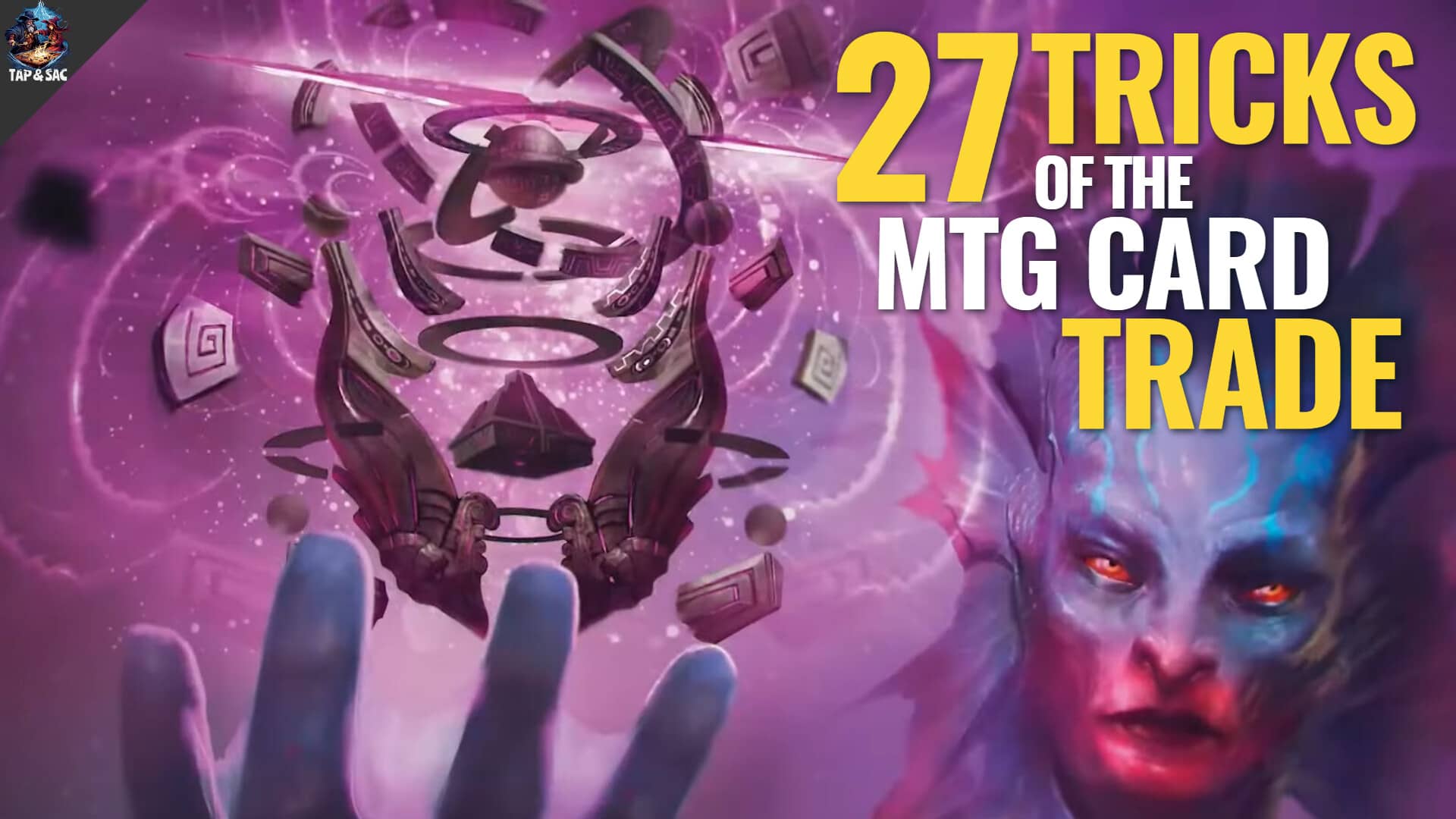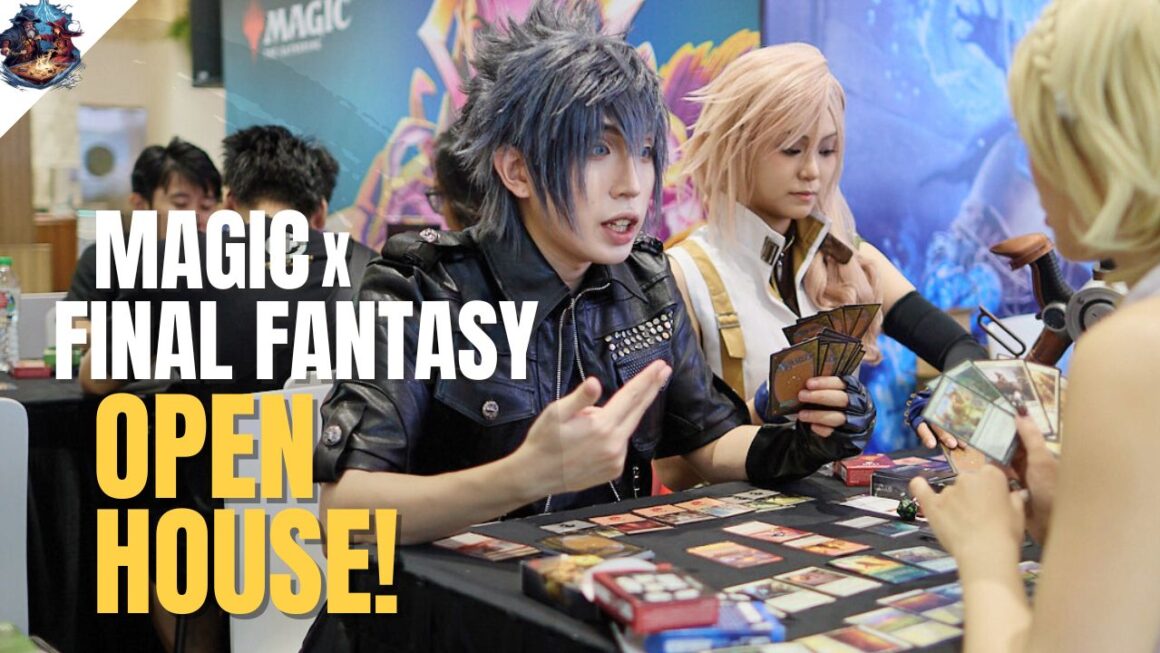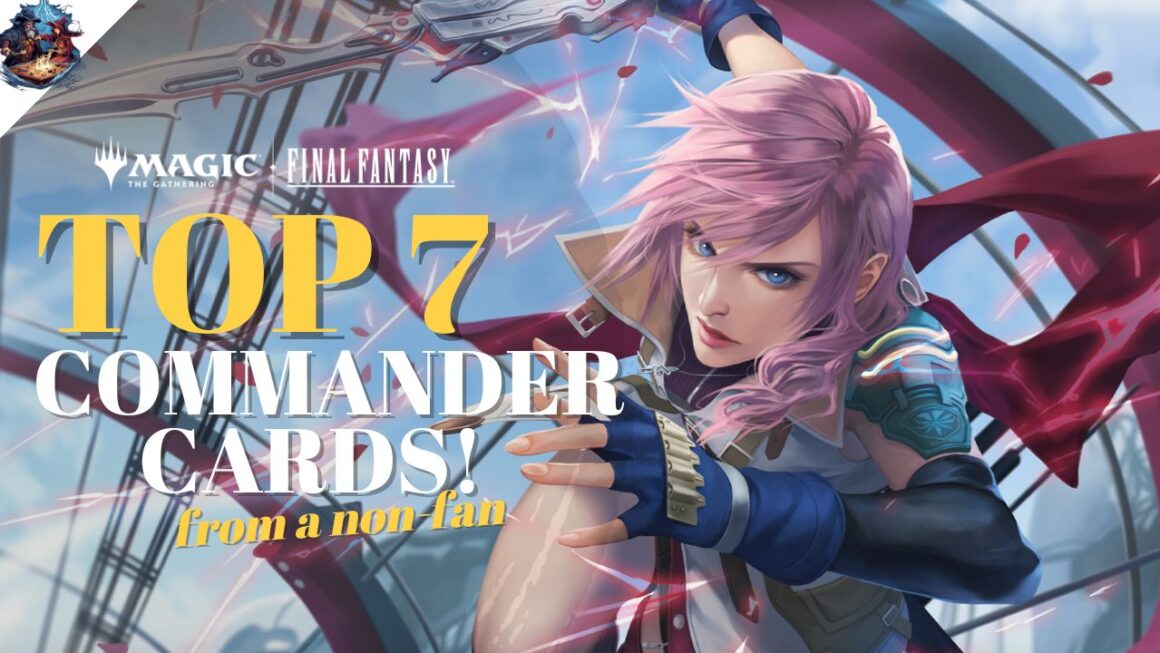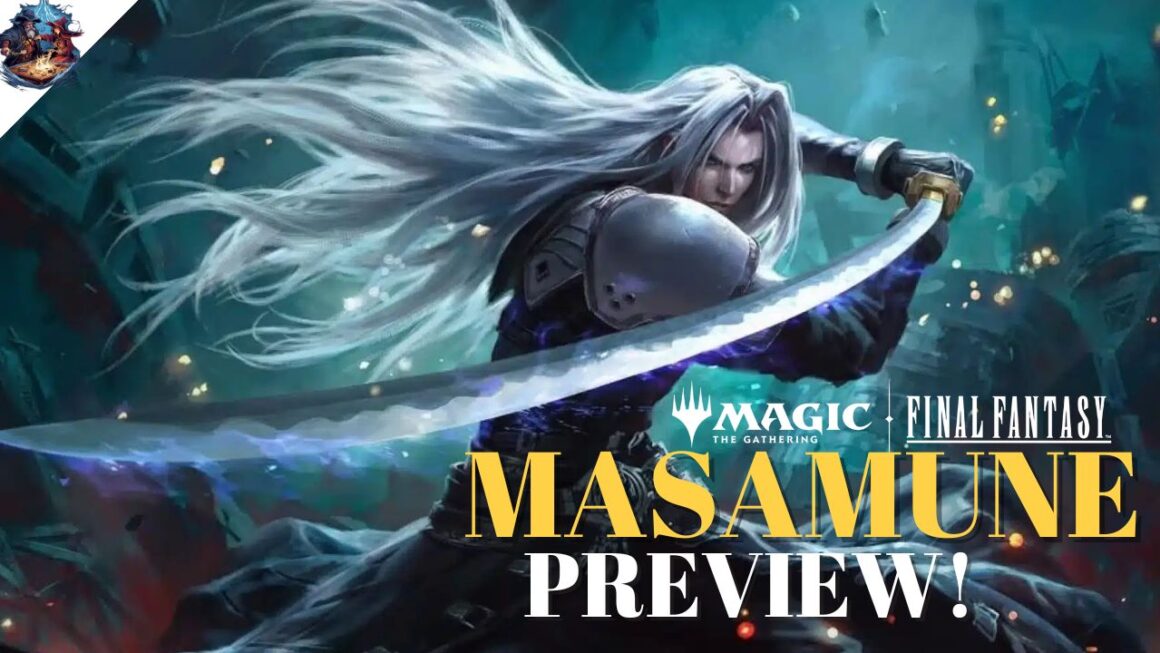I do a lot of card trading… I really mean I do a lot of card trading! I have been playing Magic: the Gathering for over 29 years now, almost the length of the game’s history. In the pre-dawn, megalithic era of Magic, when sleeves were nowhere to be found; where Ultra Pro was synonymous with baseball card collection; when ante was played and Iron Magic made children and teens cry (a barbaric variant of Magic where a card was torn in half when it went to the graveyard, akin to playing a video game on Nightmare Mode, a mode of play in which you have one life (one life) to beat the game).
What I am trying to say is that I have years trading experience under my belt. I’ve been on the receiving end of bad deals but also made some trades that were well in my favor. But a case of the moral compass and technology has steered me and most others in the right direction.
Now trading can be split into two areas of action: trading on gut, feelings and desires. I only suggest trading like this with true friends, those you do not nickel and dime with, friends who gift each other cards for no particular reason, who you trust to not take advantage of you with and vice versa. I’m not going to talk about this type of trading. I’m talking about using trading apps or TCGPlayer to keep trades equal. If an app you are using has a trade feature or a way of keeping track of prices, use it. I suggest MTG Familiar, as it has a column A/column B approach that allows you to trade by ways of the lows, medium, the highs and the market value.
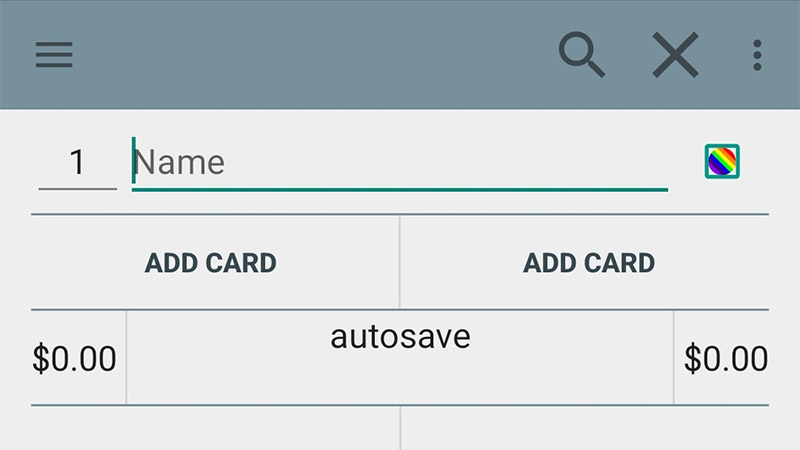
I think market value is the best because it will not take into account market manipulation or price spikes. I do not suggest trading in the highs as many TCGPlayer stores will purposely put cards at an astronomical extreme amount as a placeholder when they either temporarily run out or they’re just manipulative con artists who are trying to run the price up to increase the value of their said single(s) (that have been pulled from their storefront until the price increases). I would also not use the lows, as damaged, heavily played and moderately played cards taken into account.
Organization Before Trading: Time Well Spent
When deck building and I know I need to acquire cards, I create three lists so I know what I am looking for in trades, as there are cards I know many will not have in their binders, that I can just get elsewhere for very little. This is my approach:
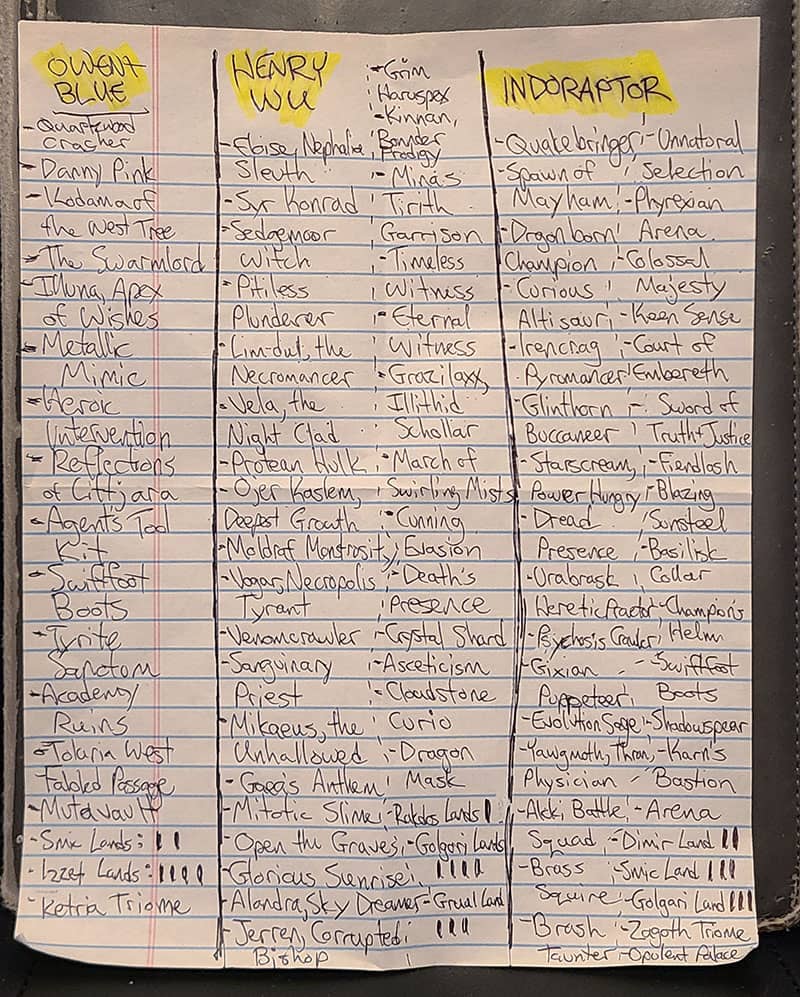
I have three lists:
List A, the chaff that I will either buy from an LGS or find in my own boxes and binders at home (this includes basic lands, tokens, stuff I typically won’t see in trade binders) that I won’t pick in trades.
List B, the cards I want to pick up in trades, this is the list I share with others.
List C, cards of high value that I will get professionally proxied (I will save up $150 for 200, which can be for [usually] 5 to 8 decks being worked on — side note: I only proxy cards I own and that are over $10, but there’s an exception to that even in which I will mention). Cards on this list might also be in my other binders I have for deck building or my recent “trades” box [cards I got in trades set aside for current and somewhat future trades]. Now I did mention there’s an exception to the C List, and that I still will pick up cards on this list when it’s available and affordable as a trade. I will not trade off $60 worth of $2 cards for a single Dockside Extortionist, as an example. I don’t want to thin my trade binder too quickly. I’d rather just proxy one up professionally (the exception to this rule is when luck is factored in, as I recently got this critter as a List pull… Woot-woot!)
Presentation: Putting Your Best Foot Card Forward
Presentation can be the difference between trading away cards that deserve to be viewable. Most card traders use a binder to display cards. Some traders have a bare threshold (such as fifty cents, dollar, two dollars, etc., such as me (I go with fifty cents), while others throw every rare/mythic they own into the binder. Unless your collection is just starting off, I do not suggest this because space is limited, as well as weight is limited; you don’t want to cause unnecessary strain. I have seen binders divided up into different categories: by color, by rarity, by set, alphabetically (do not do this unless you enjoy the OCD lifestyle), or any of the said combinations. I have the front 50% (or so) as Rares & Mythics, in the order of: colorless, lands, multicolor, then the five colors. The next 10–15% is the most recent set. The back is playable and valuable (again, fifty cents or higher, a common or uncommon that’s fifty cents or more is typically played more than bulk — cards of low value that build up after time, like the layers of sweater worn by Little Ralphie’s younger brother in a Christmas Story).


If you are just starting off and do not own a binder, a Bundle box will suffice, but do yourself a favor and at least go to a discount dollar store and get a binder. Your LGS (local game store) should have Ultra Pro nine pocket sleeves. You can also check a sports collectible store, Amazon or eBay. I have also seen some traders keep their priciest cards either in the front as proud bling, or the back as the “elite” section for the whales (collectors who can bankroll the top notch cards like Power Nine ).
What not to do: bring your 5,000 count box and tell people to dig through. While I admit I do love digging through 5k boxes, I am an experienced card hunter. Many others aren’t. You’ll most likely have others looking for specific cards who will miss hidden gems. Do not just turn cards upside-down to signal they are not for trade; it’s just teasing others with what they cannot attain. I either keep recently traded cards in the very back, turned around. I want to keep them safe and in a spot where I’ll remember to find them to sort later when I have a chance. If that’s not your jam, bring with you a hard plastic card case no bigger than a Commander deck or one of the cardboard boxes Dragon Shield comes in to store safely your recent cards you got in trades.
Using the Whole Buffalo (Nothing Goes to Waste in a Trade)
Now here is the meat and potatoes of this piece, how to get the most out of your trades. This will be quickfire pods of advice, so pay attention and take notes. For newer players and the inexperienced, trading cards can be daunting. Too many words on too many cards, feeling rushed and pressured (sometimes intentional, but most of the time not on purpose), and a general lack of how to find the most value (value is intrinsic, different for everyone). When dealing with the tunnel vision trader or indecisive trader, here are some amazing tips:
Ask what deck(s) they are currently building and what direction they are going in. A fresh pair of eyes (aka you and your trades) can suggest interesting and unique ways to help with their deck. Find out how many decks they are working on. If they are only working on one, explain to them planning ahead is always good so when they are ready to build their next deck, they already have a leg up. I always tell traders to pick up deck staples, cards like fast mana (Dark Ritual, High Tide, mana rocks, mana dorks, land tutors), removal (creature, artifact, enchantment, non-basic land, Planeswalkers, battles), card draw, board wipes and recursion are needed. A deck that is purely combos and synergy will have a hard time with threat assessment if none of the above is also added. If you have similar deck to their current or are also have the same deck being built, offer suggestions. If they are unsure about what their next deck will be, start with probing questions, such as what are some themes, keywords or synergies they would like to explore? Magic has a theme around almost all keywords, tribes and synergies. To piggyback the previous ideas mentioned about how to set up your trade binder, you can have a section dedicated to legendary creatures somewhere in the binder so prospective traders have an area to browse for future deck ideas. I have used all of the mentioned ideas to push trades. Pushing a trade is not a bad thing. It’s not being manipulative or using underhand techniques to trade. It’s just a way to expand the mind of the person you are trading with.
The Trading Advice You Didn’t Know You Needed
Some other tips for trading:
- Asymmetric trades are acceptable: trade a binder (itself), a play mat, your dice (yes, some Magic dice have value), CD’s/records, collectibles, gift cards, favors (keep it PG, such as going out of your way to drive a friend somewhere or buying food), etc… Be open to suggestions that are reasonable.
- Trading with close friends doesn’t always mean keeping things 100% equal all the time. You are friends for a reason, you help each other out without resorting to keeping score. One day your trade might lean more to them and be off by a couple dollars, but another time a trade might be the other way around. As long as the dichotomy of your friendships allows the simple push and pull, where no one takes advantage of each other. Just make sure the friendship is symbiotic and not parasitic. If your “good buddy” keeps asking but not giving, you may want to reevaluate the way you trade.
- Keep an eye out for the nonverbal communication: if another’s trade binder is out on the table, they are approachable. Look for deck lists lying around. Be an observer in a conversation about what another is currently building or considering building.
- When patiently waiting for a trade to be complete, pay attention to the conversation between the traders. If someone tells another that a section of a binder is a non-trade section, do not ask.
- Do not interrupt a trade just because you see a card you want and are afraid the current trader will get it before you. That is poor etiquette and will just paint a bad picture on you. Notoriety among an LGS is something you want to avoid.
- If observing a trade and see another trying to get a certain card, but they do not have anything the other party is interested in, politely offer yourself as a trade mediator. There might be something in your binder/box the other party might be interested in that you can trade for the wanted card the person wants, that you can then trade to the person who wanted in in the third place. This is a great way to break a trade impasse.
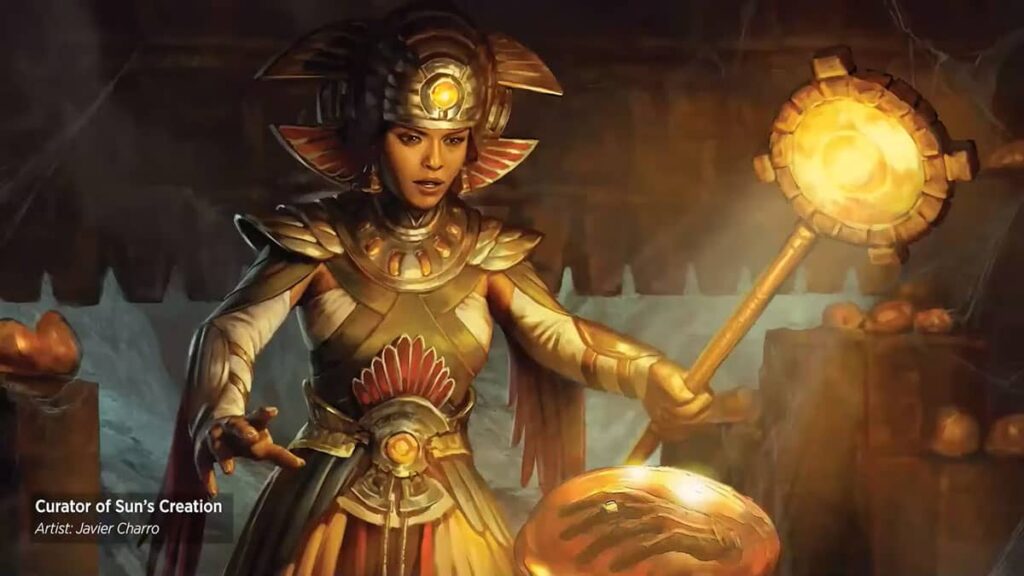
Trading Speed Bumps and Barricades: How to Get Around Them
Somethings to be aware of with traders that can be warning signs and how to deal with them:
- “I am only looking for specific cards…” Probe what those cards are. Ask if they are open to suggestions. Give alternatives (many times newer traders don’t know the entire 25,000 cards out there… I’m still surprised by the occasional card I forgot about or didn’t know about).
- “There are some cards in my binder I will not trade.” Ask them to pull them out or to let you know ahead of time. Nothing grinds the gears as pulling out a stack of cards you want from another and finding out afterwards that half of them are not for trade.
- “I’m not looking for anything in particular now.” Ask if they would then trade for value? Nothing wrong with trading value for value. Sometimes traders are in between decks.
- “I don’t own anything worth trading.” I hear this a lot. It’s just an excuse for those who do not want to trade or are too lazy to get out their trade binder or go to where their cards are (in their car, with another at the LGS, behind the counter, etc…). Or their idea of what’s worth trading is different from your idea of what’s worth trading. I try to explain the old saying, “Another man’s trash is another man’s treasure.” We do not know what cards others are looking for, so it’s a moot point to think and say what you have is trash. I’ve seen people trade off their “draft chaff” (pretty much the same as the term “bulk”) for one or two dollar cards.
- “I’m not in the mood for trading right now.” Sometimes hitting someone up when you first meet them with a request to trade can be off-putting. Not saying to not do that, but if you get that response, take the opportunity to get a game in or two. Maybe they’re just itching to play Magic. Maybe they’re just not happy, or moody, or hungry (in that case, offer a snack while playing a game) or it can be something personal. Whatever the reason may be, nothing lifts the spirits like a fun game of Magic. When taking this approach, please read the room: if they are in a bad mood, don’t get over-competitive. If they are just pushing for a game, give it your best. After you get in a game or two, then ask again for a trade; you might have a better chance.
- “Sorry, I was just packing up to leave.” This is a good opportunity to find out if they are a regular at this LGS. If you are the one visiting from out of town, attempt to exchange details on Facebook or another social media platform, as it’s less intrusive or creepy as asking a stranger for their phone number (that can come off as weird/strange). You can also probe to see if they are just heading out to get food because they might be coming back. If you are at a convention and there is still another day, make an attempt to meet them the next day, but don’t be pushy, be polite.
- “I don’t have a lot with me.” I hear this a lot when there is a draft or sealed event. Without being a “shark” (explained further down below) ask if there’s anything they got from the draft/sealed that they would trade. Sometimes others forget that they have cards they just picked up.
- “I’m new at this and do not want to be taken advantage of.” We’ve all been there. We’ve all regretted a trade. The answer is giving guidance without sounding patronizing. Show the app you use to trade. Explain what market price and how it’s like getting a fair market quote on something like a home, a car, stamps or coins (mention this variety because the value of a car and the value on a steel penny are remarkably different, it’s the concept of the examples). For example, with MTG Familiar, I will explain the column A and Column B approach. I will also use the above techniques, as it is very important to leave a positive experience with new traders. I have heard stories of new/new-ish and returning players getting the bad end of a trade and they develop into the player base who give this response:
- “I don’t trade cards. If I want a card, I will buy it.” Don’t bother. Walk away. You’ll be banging your head against the wall with these types. To each their own, but don’t bark up the wrong tree.
Don’t Be That Guy That No One Wants to Trade With
I don’t like it when they call me Faux Pas-Poppa, but in all seriousness…
What not to do in trades:
- Don’t offer cash, PayPal, Venmo, Google Pay, Apple Pay, etc… in an LGS. It’s rude and a great way to get 86’ed from the joint. An alternative can be to tell the trader to look through the store for product or other singles they are after (or even sealed product like booster packs), even snacks or drinks. Find the market value of the trade and buy around equivalent value. It’ll not only keep you from getting kicked out, but put you in good standing with the store owner. If you are finding ways to push sales for them you’ll be appreciated.
- Don’t trade in an area that has no cell reception for the trading app/method you utilize. If the LGS is in a dead zone, ask the store clerk or owner to be a trade mediator, but be polite. The clerk or owner will probably be busy running the store. If that’s not an option, ask to trade outside (most, if not all, urban and suburban areas will have cell towers around, just bring a friend as a witness to keep all trades fair). If that’s not an option, just don’t trade. Wait until another opportunity with them can happen. Set a time and date in a public spot if you want the trade or they want the trade that bad.
- Don’t trade with children unless you know their family or their guardian is there. The store clerk or owner can be a great trade moderator. If trading in front of a guardian (older siblings/family members count as guardians for this example), explain how the trade will happen and what metrics you are using to keep the trade fair.
- Don’t be a shark or a vulture: a shark takes their knowledge of card values and uses it to make an unfair trade. The vulture hovers over others who are opening sealed product. Nothing wrong with asking another what they opened and if they want to trade any of it, but do not hover. It’s invading private space and will make another uncomfortable, you’ll lessen the chance to trade with them. Some people are opening up their prize or participation prize and are exhausted.
- Be aware of the whales in your community, as they probably already have the cards you have. They (most of the time) fall under the category or collectors who say they buy singles, not trade.

More Trading Tips (For the Ultimate Card Swapper)
Here is advice to be the better person:
- If you have experience playing this amazing game and have adequate experience trading, offer to be a trade moderator. There have been many times where I helped another pick out cards from another’s trade binder. I was appreciated by both parties. I also kept things fair by offering to keep tabs on the trade with MTG Familiar.
- If you are working on a deck, have a list of cards you are looking for. If you are like me and design decks on paper, keep note of the cards you are looking for in trades.
- Have back-up options for cards you could swap out. You can’t always get what you want, but sometimes you get what you need (or so Mr. Jagger has sung to us). shock-lands and fetch-lands are usually the most sought after Non-Basic Lands for a deck, but they are not the only options out there. Keep yourself open to other options that come into play untapped, such as Tango Lands, Filter Lands and Pain Lands, just to name a few.
- Don’t just be working on one deck, work on two to three decks at a time, as it will open up options when trading. The more decks you are working on, the more chances you will find what you will need.
- Be open to advice from others on what you can put into your deck. Don’t be closed-minded to their ideas. It’s like looking at a cloud and seeing an animal, but your friend will see something else. Everyone’s minds interpret data differently through different lenses. You might be looking at one aspect to your Commander while the person you are trading with sees another angle. Example: you are building around Pia Nalaar, Consul of Revival as a Thopter tribal build and you are also concentrating on bonuses from Thopters having Haste, but you forgot about the bonus of playing lands from exile. Your trade partner points out some synergies from cards they have for trade with playing cards from exile and landfall.
- Lastly, share this advice with others. This advice will benefit our community the most if we all learn to trade more efficiently together. If you are an LGS owner, do not look at trading as just another way for you to lose business. Foster a strong trade environment with these tips, this advice because the more trading you encourage, the more players you have in your store to sell product to.
- When you have an accumulation of extra sleeves lying around, put a sleeve on each card in your trade binder. This serves a few purposes:
- Cards tend to slide around sleeves of a binder that isn’t new (most binders that we own will eventually be a used binder that will, over time, stretch out
- Thickens the binder and bulks it up, which in turn makes it appear fuller (remember, appearance is everything when others get a first look at what you have. If they see some meager binder that looks like a malnourished puppy, they might begin to have a preconceived thought that they’ll be finding chafe or bulk junk)
- For some strange reason, sleeved cards just look more important… it’s like taking a dude off the street and taking the flip-flops off and t-shirt, then slapping a suit, tie and wing-tips on his feet. He suddenly looks impressive.
End Step: Do More of What Works and Less of What Doesn’t
I approach collecting Magic like the way American Indigenous people hunt buffalo: the entire collection is utilized; nothing goes to waste over time. Just like how no part of the buffalo goes to waste: skin/fur is used for clothing, bone for tools and weapons, the meat for food, the fat for fuel or as grease, and the organs for pet/companion chow. When I would scour collections to buy, the binder would be kept for future card storing. The sleeves would be kept for my own decks as the penny sleeves would hold my tokens, the loose colored sleeves would protect my commanders or be used to protect cards when mailing out cards when I traded via USPS. Cards in the bought collection would go into deck building binders or my trade binders. The chaff cards would pile up until there is enough to be traded to an LGS for store credit. I can also take said chaff and sell as bulk online or used to build decks for teaching others to play Magic (I then gift them both of the decks, a great way to get someone to start playing Magic).
Good luck trading out there. Keep it fun, but keep it fair. Magic: the Gathering is not just a collectible card game, but a tradable card game. It can be a very pricey card game if not taken full advantage of. Take this trading guide and use it to your advantage, and you might make Magic a much more affordable game.

